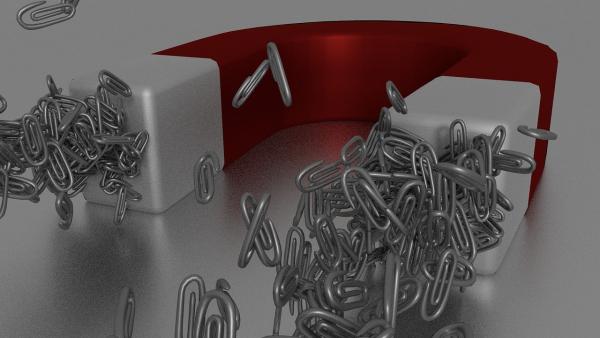Magnet Facts
-
Exploring the Shelf Life of Your Magnets: Demagnetization, Packaging, and Storage
Almost everything has a shelf life. Certainly most food products at the grocery store will “go bad” if you don’t eat them before a certain date, but other products—including electronics, furniture, and even magnets—will weaken, become unsafe, or lose their ability to function as intended if not stored in a standardized setting or used within a certain number of years. If you want to limit damage to your magnets and prolong their shelf life, consider the following factors: net magnetic field strength, proper packaging, and safe storage. Continue reading → -
How Magnetism is Used for Industrial Ceramic Filtering
Traditional ceramics, or materials derived from naturally occurring clay minerals and quartz sand, are “almost as old as the human race.” Industrial ceramics, on the other hand, are inorganic, nonmetallic materials, “that exhibit such useful properties as high strength and hardness, high melting temperatures, chemical inertness, and low thermal and electrical conductivity but that also display brittleness and sensitivity to... -
Compasses: The World’s Earliest Magnetic Invention
We often discuss the way modern technology relies on the power of magnets, but in truth, society’s reliance on magnets started a long time ago – roughly 2,000 years in the past. One of history’s most significant magnetic inventions, and possibly its first, the compass is believed to have been used for fortune-telling and divination in ancient China. Sometime between the 11th and 12th century though, the compass became a navigational tool. It changed the way we travel and allowed us to, quite literally, orient ourselves. For the first time, we could consider our position in the world in relation to others and navigate the real possibility of getting from here to there. Continue reading → -
Super-magnets: What They Are and How to Build Them
Did you know there are magnets over 2,000 times stronger than the ones currently on your refrigerator? It's certainly a crazy concept, but the invention of SuperConductor (LTS) magnet technology in combination with advancements in high-temperature superconducting materials has exponentially increased the power of magnets today. After intense engineering efforts over the last decade, a new super-magnet is expected to be ready by December 2019 that will help scientists break new ground in studies of nuclear magnetic resonance, electron magnetic resonance, molecular solids and quantum oscillation studies of complex metals. Continue reading → -
Magnet Safety and First-Aid Assistance
If you’re in an industry that utilizes magnets to improve operations, you have likely experienced the painful pinch of a finger stuck between two magnets. However, there are other potential dangers apart from cuts and blisters. Injuries can range from minor damage to something more significant like a broken bone or bad burn. Regardless of whether your role is hands-on... -
Magnet Dimensional Tolerances: What to Watch for
As a purchasing manager, your facility and products must meet specific requirements. One such requirement is reliable tools and components — in this case, magnets. Whether you need to hang something from the ceiling or sew a magnetic clasp into a shirt, any magnet you use must fall into a permissible range of dimensions (depending on the shape, grade, and material). Continue reading → -
Tiny Magnets: What are They Good for?
Most of the magnets we encounter on a regular basis –– like the ones on our kitchen refrigerators and office whiteboards –– are extremely manageable and easy to use. They fit comfortably in our hands and typically don’t have enough strength to cause injury. However, there are even smaller magnets available with more power than you might think. While their size and strength might make them more complicated to handle, they are invaluable for certain applications. Continue reading → -
The Human Magnetic Field: Is It Real?
You’ve heard the phrase “magnetic personalities” before, but are there actually magnetic people? You’ve probably seen videos circulating on the internet of people claiming to be magnetic. They place objects on their bodies only for them to hold their place rather than fall to the ground as one would expect. Are these “magnetic people” truly magnetic? Continue reading → -
Magnets in Signage: Four examples you see every day
Although you might not recognize it, magnets have a significant impact on the things we use on a daily basis. They’re used for a ton of products spanning a variety of different industries. We use them to hang notes and pictures on our refrigerators, to close the cabinets in our homes, and even to direct us through a hiking trail with our compasses. But what about signs? Many signs you encounter every day heavily depend on magnets. We’ll explore a few examples below. Continue reading → -
Magnetic Personalities: William Gilbert
Acknowledged by many as being the father of electricity and magnetism, William Gilbert is probably best known for his work on magnetism and studying the earth’s magnetic forces. Gilbert is credited as one of the first people to use the term “electricity” and was one of the first to find evidence proving Copernicus’s assertion that the earth isn’t a fixed point at the center of the galaxy. Read more about this fascinating and, dare we say, magnetic scientist here: Continue reading →










